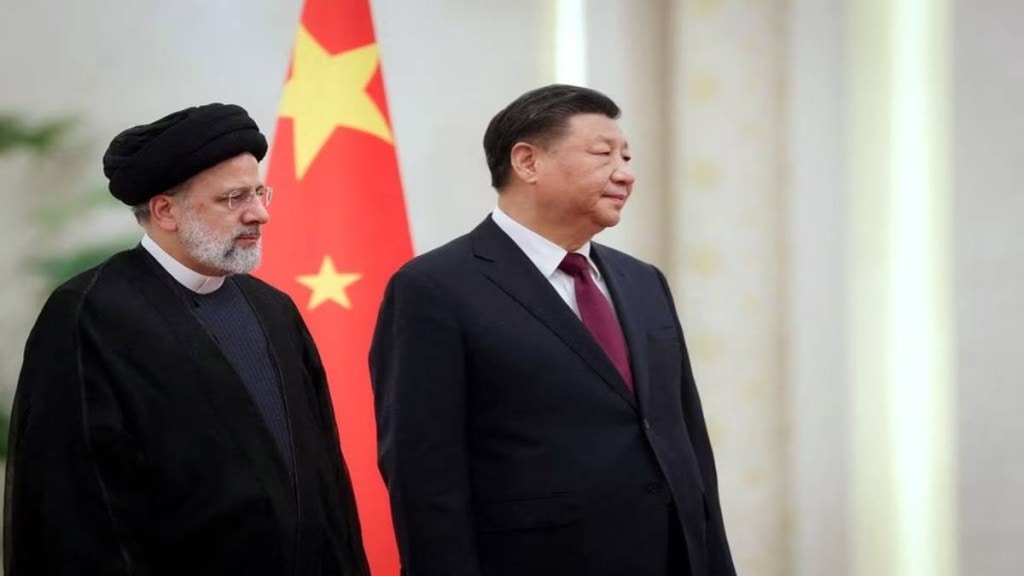By Prabhat Jawla
Iranian President Ebrahim Raisi was on an official state visit to China from 14 to 16 February 2023, where he met with President Xi Jinping, Premier Li Keqiang and another senior member of the Politburo. This was the first visit to China by an Iranian President in nearly two decades. The principal aim of the visit was “implementing the comprehensive agreement” signed in March 2021. The referenced agreement is the “25-Year Iran-China Strategic Agreement,” which called for political, economic, and strategic cooperation between the two countries. However, after nearly two years, tangible progress on the agreement has yet to be made. Meanwhile, bilateral relations face severe challenges.
Against the background of this visit, three broad observations can be made to help understand the current state of Iran-China relations. First, the visit highlights the history of delays and poor implementation of agreements between the two countries. The 25-year partnership agreement is an excellent example of this. Reportedly, the agreement is meant to provide Tehran with US$ 400 billion in investments over this period, while in return, Beijing would receive a steady oil supply. Yet, so far, no tangible progress has been made. It is for such reasons the enthusiasm surrounding 20 agreements (worth US$ 3.5 billion) signed during the visit becomes questionable.
Notwithstanding, China is still Iran’s largest trade partner. What is important here to note is Iran’s ostensible frustration with China since it feels that Beijing is not doing enough. From the Iranian point of view, the 25-year agreement was a step to mend that gap. Hitherto, the Raisi administration has blamed the failure of the relations on his predecessor Hassan Rouhani. However, Iran needs to understand the Chinese reluctance to risk this much for Iran. The heavily sanctioned economy of Iran is an enormous liability for China that faced the consequences earlier in 2018 when Meng Wanzhou, the CFO of China’s multi-billion company Huawei was arrested on charges of violating Iranian sanctions.
Second, the visit highlights the lop-sidedness of Iran’s Look East policy. It may have been popularized as ‘Look East’, but its focus and scope have been limited mainly to China. Ironically, Iran recurrently derides India for not doing enough in their bilateral ties, yet, Iran has never troubled to explain why India is not a focus area of its Look East policy. Nevertheless, what has happened over time is that after putting this much premium only on one country, Iran feels distraught with the results. Yet, Tehran presses on an unreasonable approach where it expects the partner countries to turn over backwards for Tehran, which has little to offer than oil, something that a host of other countries are willing to provide with lesser baggage.
This is what can be observed in its relations with China lately. Over the past few years, China has expanded and diversified its portfolio in trade and investments in the region with better payoffs. The joint declaration with GCC in December 2022 is a testimony of such payoffs where China urged Iran to cooperate with the international watchdog IAEA on its nuclear program while also commenting on three disputed islands in the Persian Gulf. Iran was furious over these suggestions, which it viewed as an attack on its territorial integrity and sovereignty. Interestingly, Beijing felt no need to compensate for such diplomatic snub besides usual diplomatic niceties.
Third, Iran-China relations are caught between Russia and the Ukraine war. After the war, Iranian exports to China witnessed a slump, while Russian exports to China registered a noticeable increase. An Iranian official admitted that Russia had cannibalized the Iranian share in the sanctioned oil market. What happened earlier was that Iran enjoyed a comparative advantage in sanctioned oil market where it sold its oil at cheap rates, which among other things, ensured that there were always customers, albeit profits were lower than the market rate. However, with the Ukraine war, Russia has undermined the Iranian position in the sanctioned oil market. Now, Iran has to compete with Russia in that narrow space to maintain its low yet steady supply of revenue from crude exports. China has taken advantage of this new setting as it no longer has to rely on Iran for cheap crude when it can buy that from Russia with less hassle. This poses an interesting conundrum for Iran, which has notably benefited from the war.
To conclude, despite the glittery speculations, Iran-China relations remain constrained on paper with no tangible outcomes. The recent visit perfectly personifies a pronounced asymmetry in relations, where Iran has high expectations from China, but China has other priorities.
The author is Doctoral Candidate, Centre for West Asian Studies, Jawaharlal Nehru University.
Disclaimer: Views expressed are personal and do not reflect the official position or policy of Financial Express Online. Reproducing this content without permission is prohibited.
